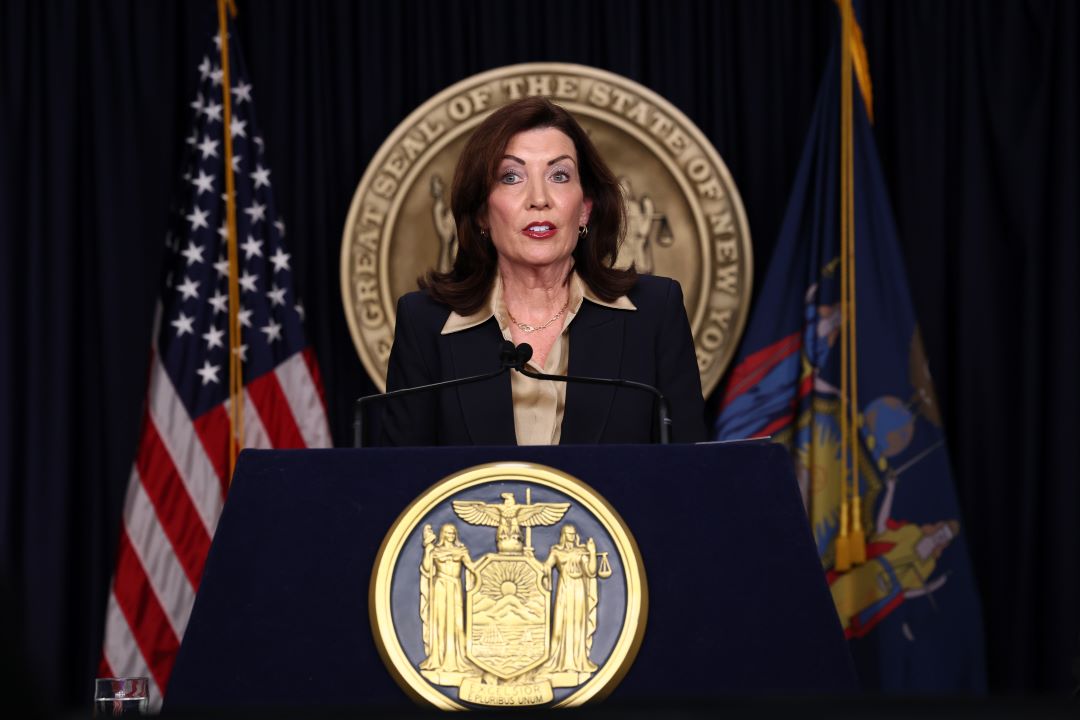Ugly Budget -- But a Pretty Precedent
What just happened in Albany, anyway?
Did Gov. Paterson skillfully maneuver New York’s Legislature into adopting a tighter and more timely state budget than it was capable of producing on its own? Or did he help the Legislature dig the state government into an even deeper fiscal hole, hammering New York’s economy with even more new taxes as part of the bargain?
Smart Policy, Straight to You
Don't miss the newsletters from MI and City Journal
The correct answer: Yes.
Details were still scarce late yesterday on the cash impact of the appropriations adopted by the Legislature over the last few weeks. However, adjusting for what appear to be even more funky book-keeping wrinkles than usual, it seems safe to say that this year’s budget will add up to more than last year’s -- which, in turn, was about 10 percent larger than the budget Paterson inherited from former Gov. Eliot Spitzer a little over two years ago, at the end of fiscal 2007-08.
Meanwhile, the Senate and Assembly are expected to vote Thursday on an $828 million revenue package -- virtually all of it previously agreed to by Paterson -- that would bring this year’s tax and fee hikes to $1.2 billion. This, on top of a record $8 billion in hikes enacted last year.
For all the backbiting that followed in the wake of Paterson’s vetoes Monday night, the core spending differences between the governor and his fellow Democrats in the legislative majorities appeared to boil down to less than $200 million, or 0.15 percent of the budget.
After all, Paterson had initially agreed to more than 90 percent of the Legislature’s $419 million school-aid restoration. He ended up vetoing that amount only after the Legislature thwarted his attempt to link spending restorations to a pair of nonbudgetary items: a cap on property taxes, and greater budget-making flexibility for the State University of New York.
The governor is also rightly concerned by the Legislature’s reckless assumption that New York can count on receiving $700 million in added Federal Medicaid Assistance Percentage funding, even though congressional Democrats can’t muster the votes to pass it.
Paterson -- who shares the blame for budgeting the money in the first place -- wants the power to impound spending on a “contingency” basis later this year if the federal aid doesn’t show up. Not surprisingly, the Legislature doesn’t want to give it to him.
But FMAP cash is hardly the only questionable piece of the new budget. All along, the plan has included what Paterson described as a $250 million “placeholder” for workforce savings that haven’t been forthcoming -- and won’t be, unless the governor begins laying off thousands of state employees tomorrow.
Paterson also assumes the state can raise $220 million through more aggressive tax audits, and that he can collect $150 million in taxes from Indian tribes, who insist they won’t pay it without a fight. And when the Legislature was unwilling to come up with money from other sources during the recent budget talks, the governor conveniently coughed up $350 million in questionable revenue and debt service “re-estimates.”
Paterson claimed yesterday that the budget contained “absolutely no borrowing.” This is only technically true, however. Instead of selling deficit bonds to investors, it appears the state will effectively borrow up to $2 billion from taxpayers over the next three years by deferring investment and job-creation tax credits to which they would otherwise be entitled. Another $1.5 billion will be borrowed during the same period by “amortizing” a portion of its projected contributions to the state pension fund -- a gimmick that theoretically could continue in perpetuity, if necessary.
The governor’s budgetary maneuvering over the last few months failed to produce a soundly balanced budget and will do further damage to a still shaky state economy. Nonetheless, his innovative tactics created a valuable precedent for the future.
Paterson showed how New York’s governor can exploit his control of temporary budget-extender bills to break a seemingly interminable deadlock with the Legislature after the start of a fiscal year. The example can only be helpful for his successor -- who will now have an even bigger mess to clean up.
This piece originally appeared in New York Post
This piece originally appeared in New York Post

